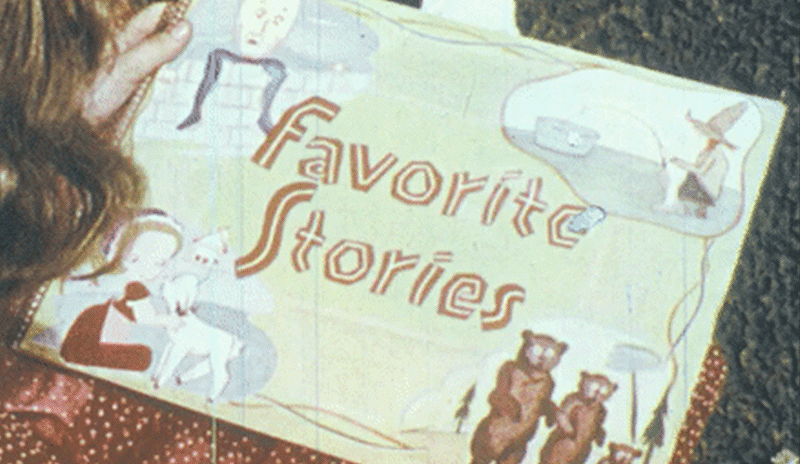This is not about the art or process of writing per se. This is about writing better stories for business. Why you should do it; how it pays back; the recipes for really good business stories.
The Golden Ticket
Once upon a time (…see what I did there?) every great business had a fabulous story to tell. Somewhere along the way – and maybe especially in B2C outfits where buyers are often assumed to be the perfect cog in a perfectly rational machine – great storytelling gave way to hosing the buyer with information, competitive point scoring and propaganda.
"Every brand is a story well told"
But in a world where information is ubiquitous – and hardly ever unique – the balance is once more shifting back towards storytelling. To help understand how to create a great business story, let’s start by deconstructing a business that IS a story.
Charlie Bucket is a poor boy, living with his parents and grandparents on the edge of town. One day, Charlie’s granddad tells him about the larger than life, obsessive chocolatier who makes the most delicious chocolate in the world – something Charlie rarely gets to taste. No one has seen the inside of his huge chocolate factory where he guards his secrets, but now five lucky children might get that chance, and win a lifetime supply of chocolate. To be one of the five, Charlie has to find a golden ticket, wrapped inside a Wonka bar.
I’ll pause there. Chances are that you know the story as well or better than I do. My take is that Wonka has great product, but whether it’s the best in the world is mostly opinion, and impossible to prove. What the business does have is a) a purpose – striving to make the best and most magical chocolate b) a secret recipe or two c) a mysterious production facility, closed to the world, where the magic happens and d) a charismatic (if slightly disturbing) founder and current CEO. These things Willy Wonka effortlessly weaves into such a tale, that Charlie comes to believe that a better future for him and his family lies in the hands of the chocolate maker and his contest.
Fabulous business stories
Roald Dahl was inspired to write the story by his experience of Cadbury. Started in the UK by the Cadbury brothers – a Quaker family – in the 19th century, the business pioneered the industrialisation of chocolate making. They also pioneered social care for their workers: building a model village – Bournville – to house them and providing them with a level of health care, holidays and education for their children. Dahl grew up near Bournville within sight and smell of the factory. The business used to send ‘taster packs’ to schools all over the country. All that said, Cadbury weren’t above nor immune to a little industrial espionage, so the inside of their factory remained a mystery for many years. That’s the real world Wonka, and the magic and influence of story at work.
And from real world to modern world. Teun (…Tony) van de Keuken is a Dutch reporter with a track record of investigating fair trade and production practises. You may not know that at the base of the chocolate supply chain – the small plantations that grow and harvest the cacao beans – slavery is rife. These plantations supply every famous chocolate brand on the globe. Teun started out by exposing the practice in print and television. No one wanted to hear him. So he went legal, and tried to convince a Dutch court to convict him as an accessory to slavery – for eating a chocolate bar. The judge declined, on the grounds that he didn’t want to criminalise the entire Dutch population.
So Teun had a grand idea. He would establish a new chocolate company – Tony’s Chocolonely. It would pioneer slavery-free chocolate, and show the big boys how it was done. A massive task, it meant creating new supply chain economics so that growers could afford to pay their workers. It meant creating an audit and tracking system, not just for the growing but also for pre-processing, packaging and final production. The end result is excellent, high quality chocolate. Whether it’s the best in the world is still a matter of opinion: but I can tell you all that freedom tastes pretty sweet to me.
Purpose. Mission. A secret recipe. Good product. All elements of a story well told. Starting in 2005 Tony’s was wildly successful in their home country. Then they moved to the UK, US and Switzerland, always setting up next door to their much larger competitors. Stories and success, intimately linked.
Why you need a story
What we need to establish now is that storytelling works as effectively for your business. And the key to that is to realise that no matter how our job description reads, mostly what we’re doing, 24 hours a day, is being human. Humans have been hard wired by evolution to be highly receptive to stories. A shared mythology – shared stories of cosmic significance – was how we learned to trust and co-operate in ever larger groups. That conferred a significant advantage in the face of intense selection pressure. So as a fingerprint for our species, storytelling is more unique than walking on two legs.
"Your customer journey starts by establishing relevance, resonance and trust. Your customer journey starts with a story."
We live, work and trade in an increasingly digital environment, and the pandemic has only accentuated and accelerated that. Your buyer will have done 80% of their research before they meet you. To get them to that meeting, your content will have had to achieve many things, and top of the list is relevance, resonance and trust. That’s the job of your story. And then when that all important meeting takes place, we can probably agree it best if the sales person also makes themselves relevant, resonant and trustworthy. That can also be achieved through story, this time a little more personal, tailored and specific.
In short, by creating a sense of connection, common ground and shared cause, your story builds bonds. It creates lasting differentiation in a sea of same. Of course people need hard facts too, and concrete proposals. But we’re all drowning in information. To stand out, you have to cut through, make contact, give inspiration.
5 tips for great business stories
1. Do be your authentic selves
If you have values, a mission or even a stated purpose that propel you forward, help you choose which path to take, or how to be when you’re at the edge of your map – these should be a part of your story. They explain why you do what you do. And often, your values are a big part of your own secret recipe – how you do what you do. We’ve written more about that here. And remember your story is intended for a human to consume, not a web crawler. The emotional hook is important.
Emotional storytelling elements can include: the hero, the quest, the obstacle and the happy ever after. You can find more help on how those elements work, and how to use them in your storytelling, here.
2. Don’t make it all about you
Connect your story to a larger narrative. In that wider context, ask yourself:
Who benefits when we succeed in our mission?
What will have changed, and why?
How did they feel before they met us, and how now?
Who would oppose that change, and what is their perspective?
How would our best customers explain our value in their words?
Finding that larger narrative, and taking that outside-in perspective, are essential if you want to create resonance and relatability. You can read more about that here.
3. Do start at the very beginning
And your beginning begins with why. Why you? Why this moment? Why customers, businesses or the world will be in a better place once you’ve done your thing. And sometimes your beginning is an end in itself. Read about ‘The power of the founder’s story…’ to understand more about that. From there, the structure goes to how, and finally what. Your how records the meaning and value that comes from how you do what you do. And your what is about the nuts and bolts of your offer. As a quick exercise, reflect on Teun/Tony’s why, how and what. And to see if you’re right, check out what he says about it.
4. Don’t take shortcuts
Do the listening and thinking first. To be able to tell your story so that it resonates with your clients and community you need to understand their challenges. You’ve got to be able to get under their skin – how do they really feel about the obstacles in their path? What’s the quality of the transformation you offer? Writing your story means making those elements tangible. The brilliant thing about using stories is that they tap into emotional touch points in a way that hard facts or dry data never can. But you can’t shortcut the empathy required to create them.
5. Do borrow from others
Storytelling structures are already wired into your subconscious. You feel them when you know when a punchline is going to be delivered. They’re working when you sense that although this feels like the end to the film, there are still 20 minutes to go so this must be the last big obstacle before the big finale. All stories follow a few familiar patterns, and deep down you know them already. Become more aware of the way they work. Start noticing the way fiction is put together. Look out for structure, and be prepared to experiment. If you want to write your own business story, borrow from the greats. Read more novels, watch more films and notice what connects with you. Getting familiar with the skeleton under the skin of a story is really useful. There are lots of online resources that set out story structure. You could start here.
Where your story shows up
Sharing your story is an act of imagination in itself. Earlier we got a bit playful with businesses on film. What would the screenplay of your story look like? What about the novel? Those are actually very helpful thought experiments, because they bump you out of the mundane and into the extraordinary. It makes you think about entertaining, not merely informing.
We’ve worked with sales organisations that start their first customer meetings with a punchy, short animation of their story. It’s a case of: we know you know we’re capable and relevant; let’s show you why we’re different.
And your business’ story will bind your people to you, not just attract and hold your customers. When it’s authentic and on the level. When they recognise themselves as active participants.
Here are a few more practical ways to air your story, in part or in full.
A manifesto – what you stand for, what you believe in, the values that sustain you. These are all powerful themes within your story. Put it on your web site, as optional reading.
More up front, an ‘About you’ on your site helps your would-be customers see themselves reflected in your story.
And of course an ‘About us’ is a perfect place to summarise your story, starting at the beginning…
Storytelling is addictive
Think about all of your most persuasive content and ask whether it couldn’t be storified and what the benefit would be?
Thought leadership or OpEds
Maybe the most obvious example as these are always stories – and often quite tall ones! Give them extra credibility, impetus and relatability by framing them within that higher narrative we spoke about. And always aim for an outside-in perspective: seeing the issues through the eyes of your customer.
Customer testimonial
An amazing opportunity to have your story told and confirmed by a third party. They won’t use your words of course, and it will be all the better for it. Let them describe the challenge you were facing, and your role in solving it. How did they feel, before they met your business? How did they feel after? How would they describe the three biggest upsides to working with you?
How tos
Can a ‘How to’ tell a story? This one does, for example. A home improvement business could create a ‘How to Paint’ guide and that would of course be very useful and practical. But what if instead they started with ‘How to paint your first home’? So much more opportunity to reach out to the person, not the painter, with a shared perspective, common cause and empathy. And of course oodles of practical advice too.
Further Reading and Resources
Why you need a why (and how it works for you) – by us
How to create powerful content strategy that drives engagement – by us
The power of the founder’s story. And how to write yours. – by us
Stories to divide and unite us. Lessons in unifying narratives from world leaders and brands – by us
Once upon a time. Why your business needs a story. – Sharon Tanton
Building a brand story – Donald Miller
Book ends
Stories reach into our subconscious to build trust and empathy. Explore the resources here, and experiment with your business’ narrative. Done right, it’ll be yours, and yours alone. The most unique and compelling thing you could ever share.





What do you think?